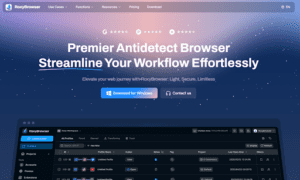Supply Chain Optimization: 18 Strategies to Boost Business Velocity
Supply chain optimization is a critical factor in boosting business velocity. This article presents expert-backed strategies to enhance supply chain efficiency and speed. From streamlining communication to implementing advanced management systems, these insights offer practical solutions for businesses looking to stay competitive in today’s fast-paced market.
- Streamline Communication for Faster Deliveries
- Lock In Fixed Restock Intervals
- Bypass Warehousing for Direct Shipping
- Integrate Strategic Supplier-Partners into Workflow
- Consolidate Orders with Trusted Suppliers
- Automate Order and Stock Management
- Collaborate with Local Logistics Partner
- Implement Rolling Production Model
- Modernize Warehouse Management Systems
- Stockpile Materials for Operational Flexibility
- Shift to US-Based Fulfillment
- Focus on Best-Fit Merchants
- Partner with Fewer, Reliable Suppliers
- Integrate Real-Time Information Sharing Systems
- Connect Online Orders to Warehouse Systems
- Standardize Product Labeling Across Sites
- Build Elastic Logistics Capability
- Optimize Transportation and Fulfillment Network
Streamline Communication for Faster Deliveries
One of the biggest slowdowns in our operation was the lag in our communication.
A driver would have information about a shipment, dispatch would have part of the picture, and the client would be waiting for an update. Every time someone had to stop, make a call, and relay details, we lost minutes that added up over the course of the day.
I changed that by moving all of our tracking and communication into one shared system. Now, the driver updates the status once, and everyone sees it in real time (the dispatch, the client, and me). There’s no checking in just to confirm location or ETA. And if a delay happens, we can reroute instantly without chasing phone calls.
That small shift cut down the hidden idle time in our process. The trucks kept moving, clients felt informed, and my team had more bandwidth to focus on solving problems instead of relaying information.
Now, if there’s one thing I’d tell other operators or businesses, it’s this: Before you spend money on more capacity, make sure the information in your supply chain moves as fast as the freight itself.
Ford Smith, Founder & CEO, A1 Xpress
Lock In Fixed Restock Intervals
I cut supplier response time by flipping the usual order process. Instead of ordering reactively, I locked in fixed recurring restock intervals for fast-moving materials based on installation velocity, not inventory depletion. That changed everything. Crews no longer wait for materials, which means they finish jobs faster and move to the next one with zero lag. Even better, customers see shorter timelines, which leads to better reviews and faster close rates. Nothing fancy. Just more flow, less friction.
The ripple effect hit scheduling first. We stopped shuffling installation dates and reduced dead time between projects. That cut down callbacks, too, since rushed jobs were eliminated. Fewer bottlenecks meant smoother pay cycles and tighter cash flow, which is invaluable when juggling labor during peak months. It’s wild how something so simple makes everything else move better. As I said, rhythm matters.
Tyler Hull, Professional Roofing Contractor, Owner and General Manager, Modern Exterior
Bypass Warehousing for Direct Shipping
The single most impactful change we made was bypassing central warehousing entirely for certain product lines and shipping reclaimed stone directly from source to jobsite. This shaved an average of 19 days off lead times, cut double-handling costs, and allowed clients to start projects weeks earlier. On a recent luxury residential build, this speed let the contractor finish masonry ahead of schedule, freeing budget for an expanded outdoor living space work we also supplied. Many assume control means holding inventory; in reality, control can come from designing a lean, point-to-point supply chain that moves faster than the competition. My advice: engineer speed into your process, and you’ll sell not just a product, but momentum.
Erwin Gutenkunst, President and Owner, Neolithic Materials
Integrate Strategic Supplier-Partners into Workflow
The single most impactful way we optimized our supply chain was by consolidating from dozens of transactional vendors to just a handful of strategic supplier-partners and deeply integrating them into our digital workflow.
Previously, for every new custom jewelry order, we would begin a slow, manual sourcing process for the specific gemstones and metals required. This created a huge, unpredictable delay at the very start of our production timeline. Our optimization involved giving our new core partners secure, real-time visibility into our production pipeline and material forecasts. They became an extension of our own operations team.
This had a powerful ripple effect across our entire business:
On Production Velocity: The most direct impact was speed. Our lead time for sourcing critical materials dropped from an average of two weeks to just 2-3 days. This dramatically reduced artisan downtime and allowed us to provide clients with much more accurate and competitive completion dates.
On Finance: From a CFO perspective, the benefits were immense. By committing our purchasing volume to fewer partners, we negotiated better pricing and payment terms, improving our cash flow. Their visibility into our needs also allowed us to adopt a more “just-in-time” inventory model for high-cost materials, freeing up significant working capital.
On Sales & Design: The most surprising impact was on the sales process itself. Our designers can now access our partners’ live inventory of available gemstones directly from their design software. During a consultation with a client, they can confirm the availability of a specific diamond and reserve it on the spot, collapsing a major point of friction and accelerating the client’s decision.
My one piece of advice for others is this: stop treating your supply chain as a series of transactions and start treating it as a collaborative ecosystem. Don’t just ask your suppliers for a lower price; ask them to be a strategic partner. Share your forecasts, integrate your systems, and find ways to make their business more predictable. When you help your key suppliers win, they become a powerful and resilient engine for your own business’s velocity.
Aviad Faruz, Owner, Manor Jewlery
Consolidate Orders with Trusted Suppliers
The biggest game-changer for me was cleaning up the supplier list and combining orders. Rather than spreading purchases thin across a dozen tiny vendors, I focused on a handful I could trust and really work with. That reduced lead times, provided more consistent stock, and prevented surprise delays at the door.
The ripple effect was significant: fulfillment ran smoothly, customer shipments hit the road faster, and I saved hours that would have been spent tracking missing pallets or juggling late shipments. Additionally, fewer suppliers meant more leverage on price and lower minimums.
If I were to share one tip, it would be to identify the bottleneck that someone always has. That “30 pence cheaper” supplier who never ships on time costs you time you’ll never get back. Choose the people who deliver and communicate, and the efficiency and happier customers will outweigh any minor price shock.
Luke Hickman, Owner, Hickman Design
Automate Order and Stock Management
One way we improved our supply chain was by using better automation tools to manage orders and stock levels. This reduced errors and increased the speed at which we could fulfill requests from suppliers to customers. Instead of using manual systems that slowed us down, we connected our systems so everyone had the same real-time data. This made it easier to plan and respond to changes in demand without delays.
This improvement had a ripple effect on other areas of the business as well. Our customer service team had fewer issues to resolve, and our marketing team could plan with more confidence knowing that delivery times were reliable. For others thinking about improving their supply chain, I suggest starting small. You could look for one area where you often lose time or make mistakes and fix that first.
Hans Scheffer, Chief Executive Officer, HelloPrint
Collaborate with Local Logistics Partner
The best supply chain optimization we implemented was collaborating with a logistics partner and consolidating our sourcing and fulfillment under one roof locally. Previously, we relied on multiple vendors for all our packaging, shipping, and product sourcing, which led to delays, miscommunication, and unpredictable lead times — especially during peak seasons.
What an incredible relief it was when we could consolidate operations. We were able to reduce our average fulfillment time by 42% and decrease packaging waste by using on-site, custom-fit, recyclable boxes. This not only solved speed challenges (resulting in more timely deliveries) and increased customer satisfaction, but it also reduced costs and gave my team the time to focus on driving growth rather than navigating the logistics of what is supposed to be a simple process.
My advice for other small business owners: Don’t overlook the ripple effect of simplifying your supply chain. Engage a logistics partner who understands your values and volume expectations, and treat it with the same strategic consideration as you would a customer relationship. Creating operational clarity provides the bandwidth to scale and operate with confidence.
Mary Case, Founder, The Happy Food Company
Implement Rolling Production Model
One of the most effective ways we optimized our supply chain was by tightening our supplier lead times with better forecasting and smaller, more frequent production runs. Instead of placing large, infrequent orders that tied up cash and created inventory risk, we worked closely with our manufacturer to shift to a rolling production model based on real-time sales data.
This change dramatically improved our business velocity. We reduced stockouts, improved cash flow, and were able to respond more quickly to customer demand and product trends. It also gave our marketing team more freedom to test new offers or bundles without worrying about long restock delays. Customer service saw fewer “when will this be back in stock?” inquiries, and our fulfillment team had a more predictable flow of goods to manage.
Treat your supply chain as a growth lever, rather than just a cost center. When it’s agile and responsive, it empowers every part of the business — from finance to fulfillment to brand. If you’re considering a change, start by building better visibility: know exactly how long each part of your process takes and where the friction really is. That’s usually where the opportunity lies.
Peter Wootton, eCommerce Manager, Olivia Croft
Modernize Warehouse Management Systems
Revamping our warehouse management systems completely revolutionized our ability to optimize every aspect of our supply chain. Rather than relying on old manual systems and processes, we rolled out our automated inventory management software and learned how to avoid both overstocking and understocking. And with material suppliers, we developed a just-in-time (JIT) replenishment method that helped us shorten lead times and radically shorten camlock fitting production cycles.
To accomplish this, I began by performing a detailed audit of our inventory and determining our slow-moving vs. fast-selling inventory. Once I was able to share data on lead times related to our JIT timeline, I worked with suppliers to manage expectations around realistic timelines for delivery of our JIT inventory. Next, we implemented barcode scanners into our process and system, removing additional errors during the fulfillment process. This entire strategy helped us reduce operational expenses, expand warehouse square footage, and improve time to product delivered to our customers.
If you are thinking of making the same investment in optimizing your operations and systems — don’t hesitate — take advantage of the easy decision to modernize your systems. To operate with faster operational velocity is to first have more visibility over your operations. That visibility is transformational!
Peter Xie, Co-founder, ProCamLock
Stockpile Materials for Operational Flexibility
We stopped ordering materials just-in-time and switched to just-in-my-yard. I started buying the top three product combinations we use in bulk, storing them myself, and treating my supply yard like a second truck. Now, if someone fails to deliver or a supplier delays a drop-off, I am still operational. It has saved more jobs than I can count. You lose more time waiting than working in this line of business. So, I would rather keep some extra stock than sit around waiting for it to arrive.
This had a ripple effect in places I did not expect. Crews started working more efficient shifts. Homeowners got their roofs finished faster. We spent less time making calls, tracking shipments, or explaining delays. Our reviews improved, too, because people noticed the speed. It even changed how I quote jobs — faster turnaround makes our bids more competitive. In other words, stockpiling materials gave us breathing room to move with purpose instead of panic.
If you are considering optimizing your supply chain, start by eliminating your biggest bottleneck. For me, it was delivery delays. For you, it might be approvals, tracking, or space. Whatever it is, do not wait for it to fix itself. Simply simplify it, own it, and stay two steps ahead.
Aaron Jakel, Founder, Bubblegum Roofing
Shift to US-Based Fulfillment
We shifted to U.S. based fulfillment to have faster delivery. This has saved 4 days shipping on average and 30 percent customer service tickets. Faster shipping would mean happier customers and hence reduced returns.
It increased our liquidity as well. We have smaller and more frequent inventory orders now and storage costs are low and overstock is reduced.
Start small and get rid of the jam. You do not have to revolutionize the whole thing. You only need to make one step faster that is slowing you down. And then construct out of that.
Peter Murphy, CEO and Founder, Track Spikes
Focus on Best-Fit Merchants
One way we sped things up was by getting really focused on which merchants we’re best built to support.
Instead of trying to appeal to everyone, we honed in on operators who matched our strengths, such as location, product type, and delivery complexity. That helped us streamline everything: from how we market and qualify leads to how we plan fulfillment and delivery.
It made a big difference. Teams were more aligned, sales cycles moved faster, and we avoided wasting time on deals that weren’t a great fit.
If I had one piece of advice, it’s this: Don’t try to optimize everything all at once. Start with clarity on who you’re solving for because once you have that, everything else in the supply chain can move faster and more smoothly.
Jarrett Stewart, CVP, Commercial, GoBolt
Partner with Fewer, Reliable Suppliers
One way we optimized our supply chain was by tightening how we source flowers. Instead of working with a wide mix of vendors, we now rely on a smaller circle of trusted growers and wholesalers. That shift means our flowers arrive fresher, last longer, and require less waste management on our end.
The impact carried over into other areas — fresher flowers boosted customer satisfaction, and less spoilage saved both money and time.
My advice to other small businesses is to simplify. Fewer, more reliable partners can speed things up far more than trying to juggle too many.
Julia Erogova, Owner, Flowers & Flowers
Integrate Real-Time Information Sharing Systems
We implemented a software system that enabled real-time information sharing between our customer service and production departments, which significantly streamlined our order processing workflow. The system allowed for immediate scanning and transfer of order details, eliminating the manual handoffs that were creating bottlenecks in our supply chain. This technology-driven approach not only resolved our substantial order backlog but also improved cross-departmental collaboration and reduced errors that previously required time-consuming corrections.
The benefits extended beyond operations to customer satisfaction, as delivery times became more reliable and our team could provide accurate status updates to clients. For companies looking to improve their supply chain, I would recommend focusing on identifying communication gaps between departments first, as these often represent the most impactful yet overlooked opportunities for increasing business velocity.
Seth Newman, Vice President, SportingSmiles
Connect Online Orders to Warehouse Systems
Allowing customers to order our CBD pet products easily remains a key supply chain approach we use to reduce inventory levels, as we don’t want our products to remain in our warehouse for too long. It’s a strategy we’ve implemented to help us increase sales and grow our business rapidly.
Our customers come from various locations, so making everything available online, where they can place orders within minutes, makes it easier for them to purchase and receive products quickly. When customers click “buy,” their order details are sent directly to our warehouse system to prepare for delivery without any delays. This has helped us maintain low inventory levels because each day, these customers visit our website and order more products for their pets. With increased orders, our sales and profits have grown, putting us in a better position to reinvest in new products and expand into new markets. Our sales team has greatly benefited from this streamlined process, closing more sales than before by building their pitches around our fast and reliable supply chain.
Using technology to optimize our sales efforts has helped us reduce the inventory levels of our products. I’d advise other businesses to connect their web applications, where customers can order products, to their warehouse systems to optimize supply chains.
Nicklas Brandrup, Co Founder, Neurogan Pets
Standardize Product Labeling Across Sites
One of the most impactful ways to optimize the supply chain is by standardizing and digitizing product labeling across global sites using a cloud-based platform. Labeling may seem tactical, but when done right, it accelerates the entire supply chain. By enabling real-time collaboration between suppliers, manufacturers, and distributors, we help eliminate bottlenecks caused by inconsistent labeling practices and manual processes. This shift improves speed to market, reduces relabeling and downtime, and ensures compliance with evolving global regulations — all while enhancing traceability and product authenticity.
For example, customers like GSK have cut SAP label print times by 98%, and Johnson & Johnson reduced mislabeling by over 75%, saving $1M annually. These efficiencies extend beyond operations — they protect brand integrity, reduce risk, and enable faster response to market and regulatory changes.
Our advice? Don’t overlook labeling. It’s often the last step before products ship, but it’s also a powerful lever for increasing supply chain velocity and resilience. By integrating labeling with core systems like ERP and MES, and moving to a standardized cloud platform, companies gain the agility needed to scale globally, adapt to disruption, and meet compliance demands — without slowing down.
Jim Bureau, CEO, Loftware
Build Elastic Logistics Capability
Building an elastic logistics capability transformed our supply chain by creating a curated digital marketplace of pre-vetted carriers and warehouse providers. This approach allows us to rapidly adjust to demand spikes without the hassle of lengthy negotiations. When customer needs surge, we can automatically source additional capacity, ensuring orders are fulfilled swiftly. This not only improved our delivery times but also enhanced customer satisfaction and retention. For others looking to enhance their supply chains, consider investing in technology that connects you with a network of trusted logistics partners. This can streamline operations and provide vital flexibility during unpredictable demand periods.
Patrick Dinehart, CMO, Really Cheap Floors
Optimize Transportation and Fulfillment Network
Brands should focus on optimizing their transportation. Transportation costs make up a significant portion of overall costs and have a huge impact on sales and customer experience. Consumers want to receive products quickly and don’t want to pay for shipping. Growing sales and retaining customers relies on being able to offer fast and cheap shipping. An optimized transportation solution will help brands reduce costs, increase their sales, and retain loyal customers.
Transportation is tightly intertwined with real estate and warehouse locations. The number and locations of your warehouses or fulfillment centers have a significant impact on shipping costs and transit time. Building or re-aligning your fulfillment center network should be one of the first things you think about when optimizing your transportation operation.
Transportation optimization and network design is an ongoing discussion that requires consistent focus and investment. For brands focused on growth and overall business velocity, consider partnering with a 3PL provider who can not only take this off your hands but provide valuable, cost-saving solutions.
Zach Rogers, Director, Marketing, FIDELITONE
Related Articles:
- Supply Chain Optimization Benefits for Your Business
- Enhancing Supply Chain Quality: The Future of Compliance and Optimization



































